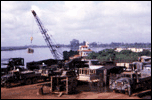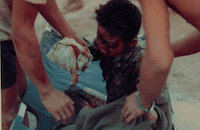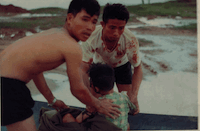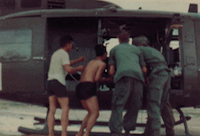June-July Unexploded ordnance is a terrible fact of war and for years, sometimes decades, war-torn countries continued to suffer casualties. In Vietnam it seemed the children, especially the young and inquisitive innocents who, only by their age, were the most ignorant of the dangers and became the most tragic of the casualties.
It was a normal late afternoon start of an expected routine shift for the members of the B Company joint River Patrol Unit PBR crews. They arrived at the French Pier (Cogido Docks), and waited as the boats came in for refueling and crew change before once again departing to their House Boat HQ on the river for their evening assignments. The pier was a relatively safe zone so the crews were comfortable and relaxed in its surroundings. Some of the crew were sitting by the pier as others lounged around engaged in casual conversation when a nearby explosion disrupted the calm.
As the surprised crews readied their weapons for the worst, two Vietnamese males suddenly appeared carrying the bloodied body of a young child. Fearing the possibility of an ambush the crews were hesitant and cautiously allowed them to approach. The child was a male no older than four years. He was covered in blood, his right arm was shredded, there was a gapping hole in his chest, his face was pockmarked from shrapnel, and his right leg was black from powder burns. One of the accompanying adults identified himself as the child's father. He was frantically pleading for medical assistance. |
 18th Bde.
18th Bde. 720th
720th 95th
95th





 4th
4th





